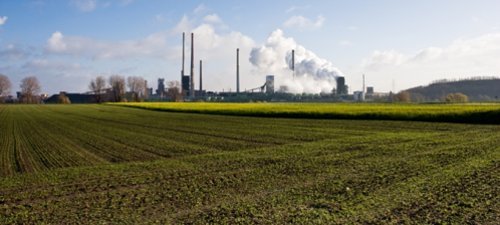Warsaw – Emissions of nitrous oxide (N2O), an often-overlooked yet potent gas, could nearly double by 2050 and thus potentially undermine gains in the ozone layer recovery and exacerbate climate change.
“Drawing Down N2O to Protect Climate and the Ozone Layer”, a new report by the United Nations Environment Programme (UNEP), warns that nitrous oxide is now the most important ozone-depleting emission and the third most potent greenhouse gas released into the atmosphere. While N2O exists naturally in the atmosphere in trace amounts, human activities have increased its concentrations since the industrial revolution.

The UNEP report, produced in conjunction with scientists and experts from more than 35 organizations, points out that with determination and commitment to act, it is possible to draw down nitrous oxide emissions.
Reducing N2O emissions has major cost benefits since emissions are connected to diverse economic sectors from agriculture, chemical manufacturing and electricity production to waste management, transportation and fish production. Gains from emissions reduction will include increased crop and livestock productivity, poverty alleviation, improved human health and reduced environmental degradation.
An earlier study quoted by the report indicated that an across-the-board improvement in nitrogen use efficiency of 20 per cent would cost around US $ 12 billion annually, but would save around US $ 23 billion in annual fertilizer costs alone. Additional environmental, climate and human benefits could be worth an estimated US $ 160 billion per annum.
“We need all hands on deck to combat the serious and significant increases in N2O levels in the atmosphere”, said UN Under-Secretary-General and UNEP Executive Director Achim Steiner. “UNEP is working on a range of fronts to support the international efforts under the UN Climate Convention, from catalyzing the uptake of renewable energies and energy efficiency to adaptation projects in many parts of the globe.”
“In addition, UNEP is working through a myriad of voluntary pathways from accelerating the policy switches towards an inclusive, resource-efficient green economy to the Climate and Clean Air Coalition to reduce emissions of climate pollutants such as hydroflourocarbons (HFCs), methane and black carbon,” said Mr. Steiner.
“Although not as prevalent in the atmosphere as CO2 in terms of mass, N2O – commonly known to many as ‘laughing gas’ – is far from a laughing matter in respect to climate and ozone damage as it has a disproportionate impact on global warming because of its radiative properties and long lifetime in the atmosphere, which is 120 years on average. Action on these emissions offer yet another opportunity to keep the world under a 2 degree C temperature rise,” he added.
Most of the depletion of the stratospheric ozone layer up to now has been due to the infamous Chlorofluorocarbons (CFCs) and other halogenated (chlorine- and bromine-containing) chemicals. However, these chemicals – unlike N2O – are now widely controlled by the Montreal Protocol, an international treaty designed to protect the ozone layer.
Agriculture is by far the largest source of human-induced N2O emissions, accounting for two-thirds of these emissions. Meanwhile, other important sources of N2O include industry and fossil fuel combustion, biomass burning and wastewater.
The report lists specific, actionable measures that can be taken in each of these areas.
Agricultural Emissions
Emissions can be reduced by boosting the overall nitrogen use efficiency of agriculture. This means improving the ability of crops and livestock to better utilize nitrogen, and minimizing the loss of nitrogen to the environment that occurs during crop cultivation and animal production.
Other options for reducing agricultural emissions of N2O include reducing excessive meat consumption – as the production of animal protein leads to higher N2O emissions than plant protein – and reducing food waste and loss. As a considerable percentage of food produced is either lost or wasted, avoiding such wastage could reduce the amount of food that needs to be produced and, therefore, the emissions associated with its production. UNEP, through its joint campaign with the FAO, Think.Eat.Save: Reduce Your Foodprint, is working to reduce food waste.
Controlling Emissions from Industrial Sector
The report suggests that significant gains can be achieved by controlling emissions from just two chemical industries – adipic acid and nitric acid – which account for about 5 per cent of global N2O emissions. Such reductions can be achieved by installing emissions control equipment in facilities producing such chemicals.


















